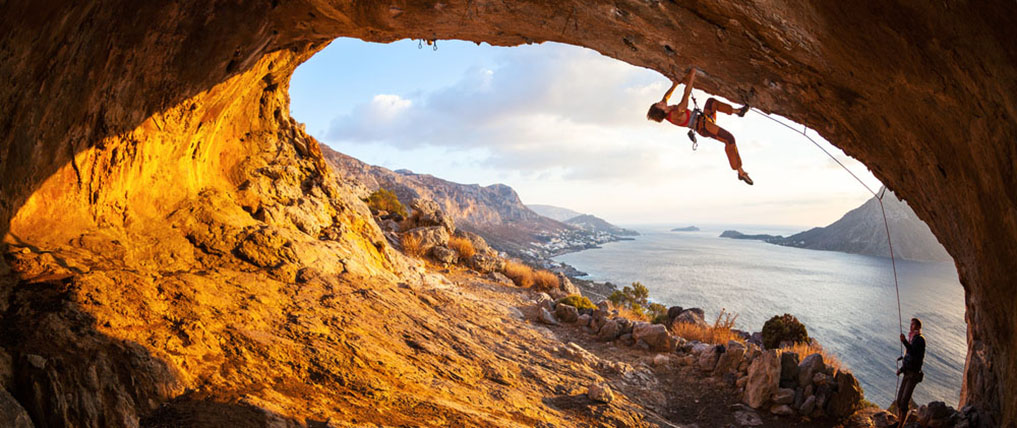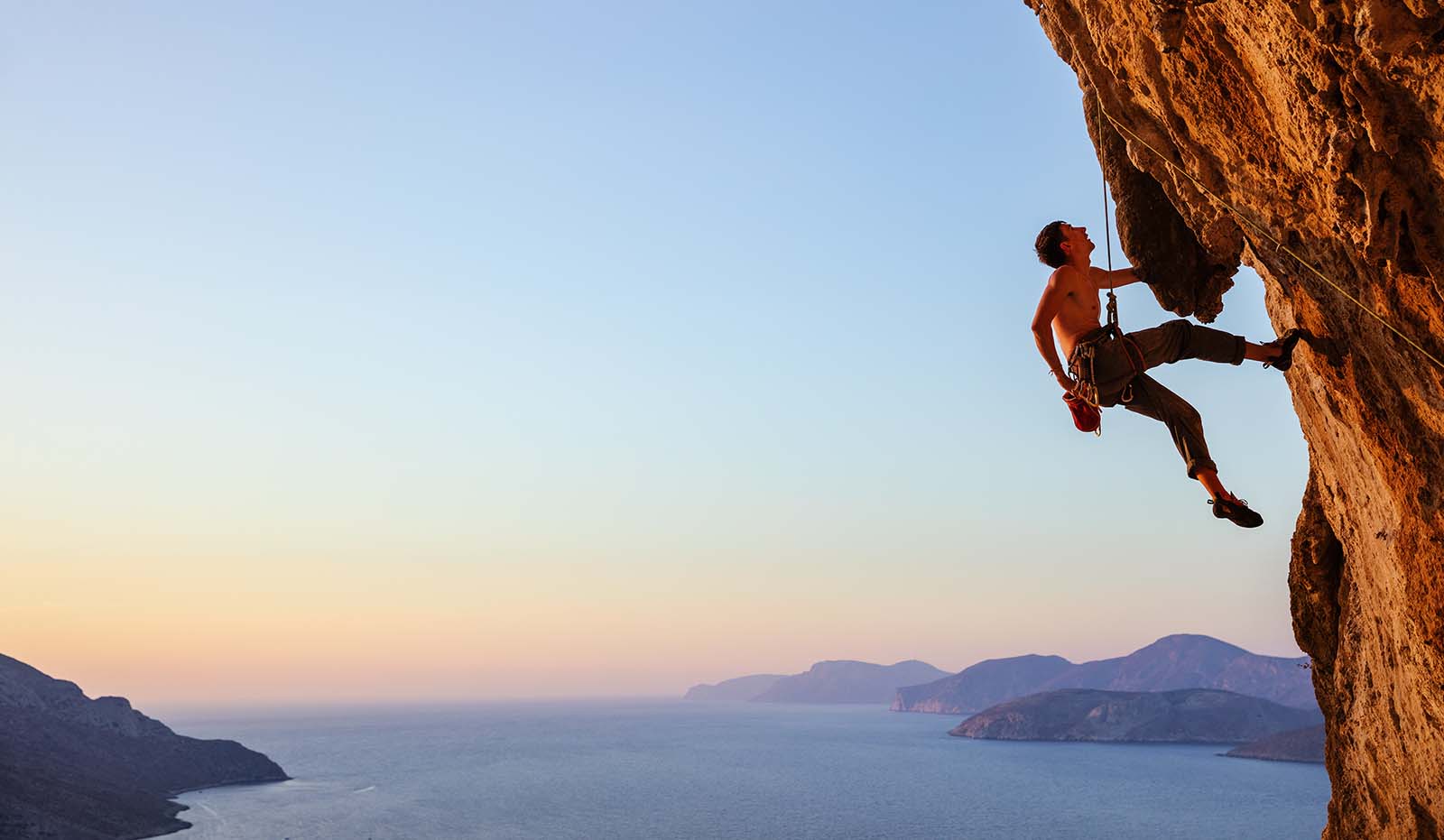All About Climbing Grades and Bouldering Ratings
March 7, 2021

Rock climbing is a thrilling outdoor activity that can be highly rewarding. It offers stellar views of the surrounding landscapes and a real physical challenge, to say the least. But if you’re just getting into this outdoor sport, you might be taken off guard by the vocabulary and jargon that goes along with it. When you hear someone mention a cluster of numbers or a scale of this or that, you will have no idea what it means.
But if you are serious about this amazing, adventurous sport, you’ll need to know all about climbing grades and bouldering ratings. From the Yosemite Decimal System that offers a glimpse at the rockface’s difficulty level and degree of challenge to the V Scale, which gives an idea of the bouldering rating, it’s essential to understand each so you know precisely what you’re in for. Because, no matter what that rock or mountain face looks like, there’s only so much you can see from standing on the ground.
So, Pelican has put together this ultimate guide on climbing grades and bouldering ratings to help you get acquainted with rugged rock climbing excursions. Knowing how to read the grades, scapes and rating systems can help you decide which route to take when you’re out of the rock climbing gym and at a base launch point. Plus, we compare the two for climbers and boulderers, so each can appreciate the other activity a bit.
Climbing Grades Ratings
Initially developed to describe backcountry travel, the Yosemite Decimal System (YDS) is used to help rock climbers understand what they’re in for and the skill level the route takes. The YDS uses a climbing grade rating system of 5.0 through 5.15.
Route Classifications
Along with the climbing grades, each route has its own classification. Made up of five classes, from beginner to more technical and highly advanced, here are what you can expect along each route:

Class 1 – This route classification is relatively easy. You can expect to walk along an established trail that is relatively flat. There’s a low chance of getting injured. Through the climb, you will mostly use your hands for balance.
Class 2 – Along this route, you can expect to hike a steep incline. There might even be some scrambling along rocks and boulders, which means using your hands, so wear protective gloves and equipment. Along a Class 2 route, you will encounter little potential danger. Rope can come in handy, but not necessarily. Wear a sturdy pair of hiking boots, though!
Class 3 – In this class, you will be hiking a steep incline with increased moderate exposure. Handholds will be necessary and, although it may not be used, be sure to carry a rope for beginner climbers. Beginning with Class 2, you can expect scrambling from here on out. Also, you might take a short fall, which could be fatal, so have your wits about you so you don’t experience such an event.
Class 4 – Getting steeper, Class 4 requires the use of a rope and is very exposed. It also has the potential for longer falls, so be on your toes!
Class 5 – At this highest route classification, climbing is more technical. Belayed roping requires protection. Absolutely unadvised for beginner climbers, a fall from this class can result in a serious injury, be life-threatening and even fatal. Proceed with caution and know what you are doing!
Class 5 Subcategories
Once you reach Class 5, it’s broken down into even further subcategories, each with varying levels of difficulty. Originally, the YDS used a decimal system to cap ratings at 5.9. However, with the advancements of gear and equipment, as well as climbers’ skills, an additional subcategory of 5.10 and above was tacked on, since the highest 6.0 rating was already designated for aid climbing.
Every Class 5 subcategory takes an seasoned rock climber with expert technical skills. Here’s each subcategory, and what you can expect.

5.1 - 5.4 | Easy – Great for beginner climbers, this class 5 subcategory offers some steep sections, but usually with large handholds and footholds to get a better grip.
5.5 - 5.8 | Intermediate – Perfect for beginners practicing their skills, as well as intermediate rock climbers, this subcategory level offers a low-angle to vertical terrain. It, too, offers small footholds and handholds for gripping and climbing.
5.9 - 5.10 | Hard – Deepening your practice, this level asks more of climbers. It has technical and/or vertical sections, with maybe a few tricky overhangs. All in all, it requires particular climbing skills that take dedicated practice.
5.11 - 5.12 | Hard to Difficult – With technical and vertical climbs, you might find a few overhangs with small holds, if you’re lucky. Only the most dedicated of rock climbers can reach this level — with lots of practice!
5.13 - 5.15 | Very Difficult – This climbing grade is quite strenuous! With technical and vertical climbs, with very few overhangs and small holds, this high-grade route is intended only for skilled, expert climbers who know their stuff and who train regularly. No weekend climbers here!

6.0 | Can’t Be Free Climbed – On this climbing grade, you’ll find absolutely no handholds or footholds. While it’s still possible to scale it, the route is considered only capable of being aid-climbed. Furthermore, the 6.0 grade has an added rating of A1 through A5, each with an added level of difficulty.
The Class 5 Subcategory has an even deeper sub-subcategory, if you will, that helps further define the 5.10 climbing grade route’s level of difficulty. This sub classification system provides an alphabetical system of the letters a, b, c, and d, with “a” being easier and “d” being harder.
During any climb, make sure to carry a headlamp to get back to camp or your car safely at dusk or when you want to get an early start to your climb. Unlike a flashlight, a headlamp allows you to keep your hands free to grab the rock’s surface. You’ll be glad you bought it!
Other Symbols of Climbing Grades
The most challenging part of a climb is called the “crux.” This crux is the basis for the rating system, but you can find a few more clues listed in guidebooks. For instance, upon reading about a climb, you can find a plus or minus symbol rating that indicates the following:
+ Means that a route is challenging most of the way, if not in its entirety.
- Means that the route contains one or a few challenging areas similar to its crux.

Standardized Climbing Grades Are Somewhat Relative
While a climbing grades’ standard numeric system can help you gauge a climb, keep in mind that the ratings are somewhat relative and can vary depending on several factors. Here are some considerations to keep in mind as you determine what climbing route to take.
Ratings are just a number. While the YDS does its best to rate each climbing grade, treat the information as a guideline only. Use the climbing grades and ratings to challenge yourself and find enjoyable climbs.
Environment and weather affect the climb. What you are capable of climbing in a gym is not going to be the same once you’re outside in heat, cold, rain or whatever the environment throws at you. Test your strength in a rock climbing gym and start at a lower rate than your average abilities first, testing your skills outdoors before advancing.
Regional ratings are relative too. For starters, a region’s environment can present different challenges. But the rating system can fluctuate locally too. Be sure to ask local climbers if the ratings tend to be high or low comparatively.
Don’t compare your climbing skills to others. Each person’s body type and climbing style is different. The climber who developed and rated the route might have more skills than you, and it can vary by situation and the above factors on any given day or locale.
Climbing Grades by Hours
When you start searching climbs, consider the hours it will take you to complete it. Climbing grade ratings also have a Roman numeral system for the approximate hours or time it takes to finish. The Roman numeral-based system was created so that higher grades can be added.
Take note of the following grading system to plan your day.
Grade I | 1 – 3 hours
Grade II | ~ 4 hours
Grade III | 4 – 6 hours
Grade IV | Full Day
Grade V | 2 days, 1 overnight
Grade VI | 2+ days
Once you get to Grade VII, you’re looking at a much longer expedition-style trip.

Whether you plan to climb a half-day on a Grade II or a Grade VI, make sure to have enough water and food. Even if you don’t climb with it, keeping a personal cooler back in the car will ensure you have provisions as soon as you return. And if you do intend to climb, make sure you keep important equipment — cell phones, GPS communicators, cameras, etc. — protected in a hard case with foam.
Bouldering Ratings and the V-Scale
While seemingly similar, climbing and bouldering are slightly different activities. And bouldering ratings are different too.
The American V-Scale
The most commonly used, standard bouldering rating scale is what’s known as the V Scale. The “V” stands for John “Vermin” Sherman, an American climber and pioneering boulderer. “Vermin” and a few buddies began to rate routes along the Texas Hueco Tanks bouldering area.
The V Scale is rated from V0 through V16, V0 being the easiest and V16 being the hardest. There is also a beginner rating of VB — easy to remember as “B” for beginner. The V Scale is open-ended and can exceed V16 at a later time, but that is where it caps out now. Like the climbing grades, you will also see a + or - to help address the difficulty level of each even further.
The European Font Scale
In Europe, the bouldering ratings are called the Font Scale and were originated in Fontainebleau, a well-known bouldering region. Hence the “Font.” Like the V Scale, it’s also open-ended. Without the Vermin “V,” it’s simply a scale that starts at 1 and progresses to 6.
However, once it reaches 6, the difficulty is subcategorized with a suffix of the letters A, B, and C, which gradually increases, A being easiest and C being hardest.
How to Compare Climbing Grades and Bouldering Ratings

Even though rock climbing and bouldering are different, they require many of the same physical skills, which can be translated and compared to each of the grades and ratings. This is not to say that both present their own unique challenges, and caution should be exercised, but if you want to enjoy both activities, here is how to compare the climbing grade YDS with the bouldering V Scale.
Again, remember that while each scale and rating holds a standard, it’s always subjective and relative to other factors.
Here’s a quick comparison between the YDS and V Scale:
5.9 = V0
5.10+ = V1
5.11- = V2
5.11+ = V3
5.12- = V4
5.12 = V5
5.12+ = V6
5.13- = V7
5.13 = V8
5.13+ = V9
5.14- = V10
Master Those Climbing Grades and Stay Safe
It’s important to be safe while rock climbing. Always climb with a group and carry the proper gear. Keep your phone and other equipment secure and protected.
More importantly, master knowing what each climbing grade means and represents. While it can be relative, listen to your body and other team members, choosing a route that is safe for everyone. While it’s great to create challenges and push yourself, the point is to enjoy the climb.

SIGN UP FOR EXCLUSIVE OFFERS
Sign up for our newsletter and get exclusive access to new product launches, special offers and much more.
RELATED BLOGS